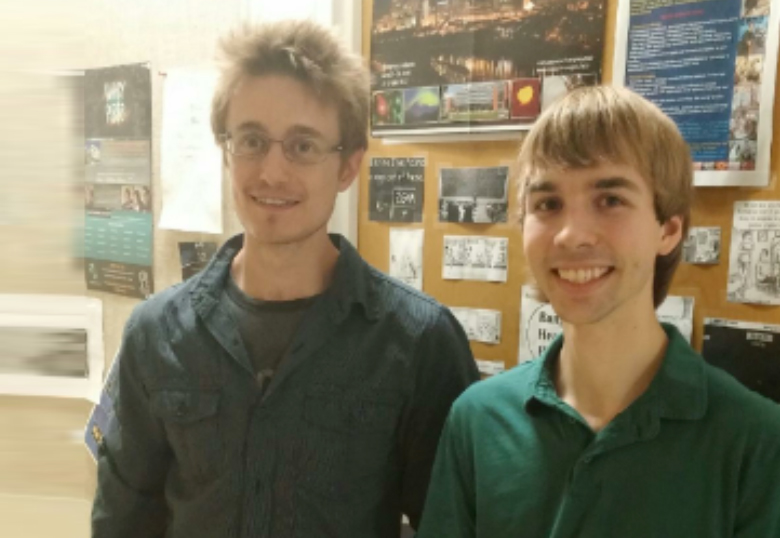A pair of University of Lethbridge physics students managed impressive results at the Canadian Association of Physicists (CAP) annual congress that took place in Edmonton in June. Matthew Robbins (BSc ’15) and Jeremy Scott (BSc ’15) each won second place in their categories for student oral presentation and student poster presentation respectively.
“Both students presented undergraduate research at the national level and managed to beat students, some of which were graduate students, from the country’s largest schools,” says U of L physics and astronomy professor Dr. Locke Spencer. “This speaks very highly both to the quality of the students, and to that of the University’s physics research programs.”

Robbins (a Natural Sciences and Engineering Research Council Undergraduate Student Research Award winner studying under Drs. Saurya Das and Mark Walton) received second place in his division for his oral presentation, Modifications of Heisenberg's Uncertainty Principle Motivated by Quantum Gravity. He was competing in the Theoretical Physics Division against undergraduate and graduate students across Canada.
“As it is currently not possible to access the natural energy scale of quantum gravity (the Planck scale), it is important to look for low-energy effects,” says Robbins, summarizing his presentation. “One such avenue of approach is by studying the corrections to the Schrödinger equation via the Generalized Uncertainty Principle (GUP) proposed in various candidate theories of quantum gravity. After finding the GUP-modified wave function for the simple harmonic oscillator, I then determined a corresponding function (Wigner function) in phase space. The modifications induced by GUP to the simple harmonic oscillator were demonstrated by analyzing the perturbations, the probability distributions for the position and momentum, and the energy levels.”
Robbins plans on pursuing a Master of Science under the guidance of Das and Walton, beginning in Fall 2015.
Scott (also a former NSERC USRA student) began his Master of Science under Spencer in May 2015 and received second place in his category for his poster presentation, Prestellar Cores in the Aquila Rift. He was competing against undergraduate and graduate students from across Canada in the Atmospheric and Space Physics division.
Due to last-minute scheduling problems, Scott also had the opportunity to present a talk on behalf of Spencer about far-infrared astrophysics and the U of L's involvement in this field.
“My poster was comprised of some of the work I did during my last year as an undergraduate student, and it focused on analyzing starless and pre-stellar cores in the Aquila Rift, a region of active star formation,” says Scott. “This work combined photometric data from Herschel (both the Spectral and Photometric Imaging Receiver (SPIRE) and the Photoconductor Array Camera (PACS) instruments) with high resolution heterodyne spectroscopy of CO emission recorded with the instrumentation suite at the James Clerk Maxwell Telescope (JCMT). I generated spectral energy distributions (SEDs) by employing four distinct photometry methods. These SEDs were then fit to a modified black body curve from which important parameters such as dust mass, temperature and emissivity were extracted. The CO emission spectra allowed the determination of the distribution and relative velocity of cold gas in these starless and pre-stellar cores. This work gives insight into the conditions and processes taking place in the early stages of star formation.”
Both Robbins and Scott are delighted to have received this recognition and are excited about the prospects of continuing their research through graduate studies in the Department of Physics and Astronomy.
